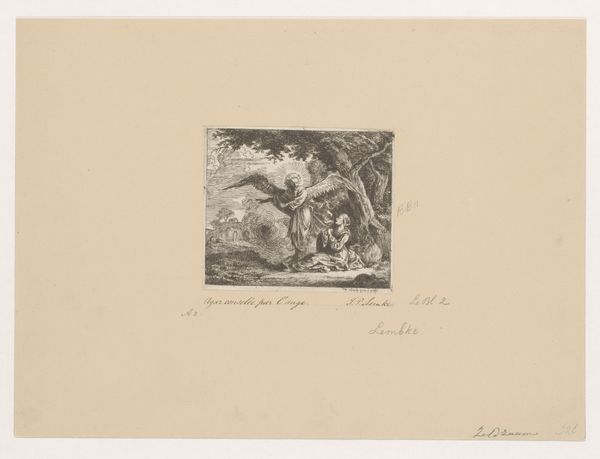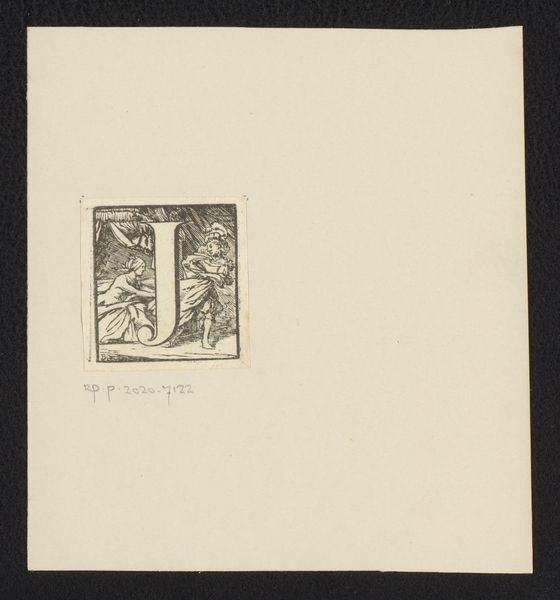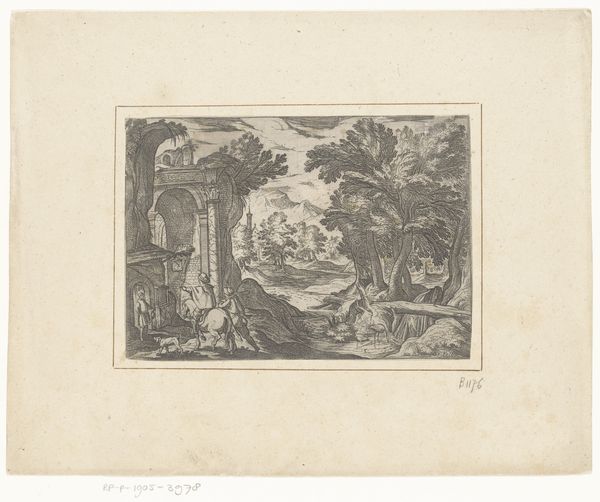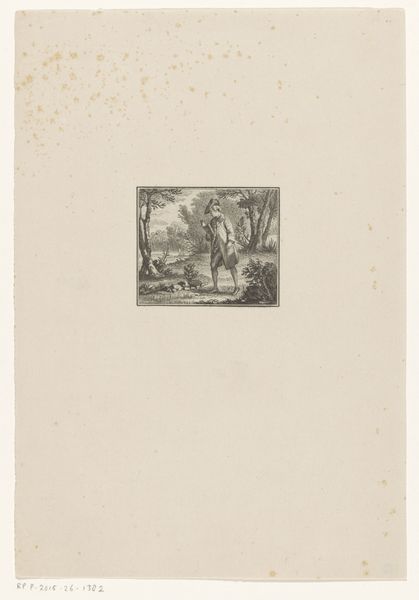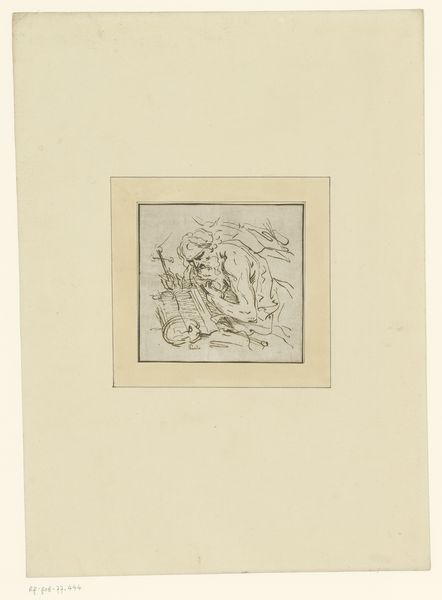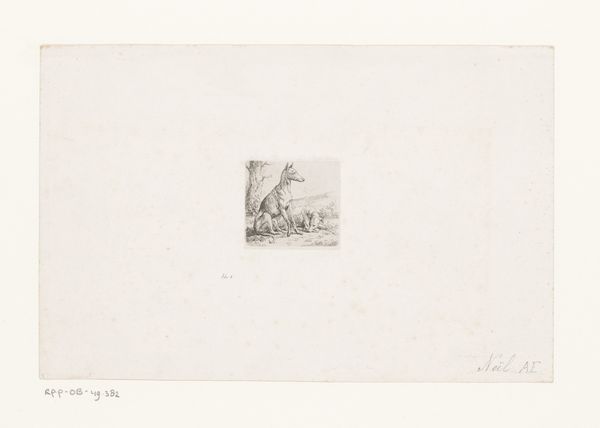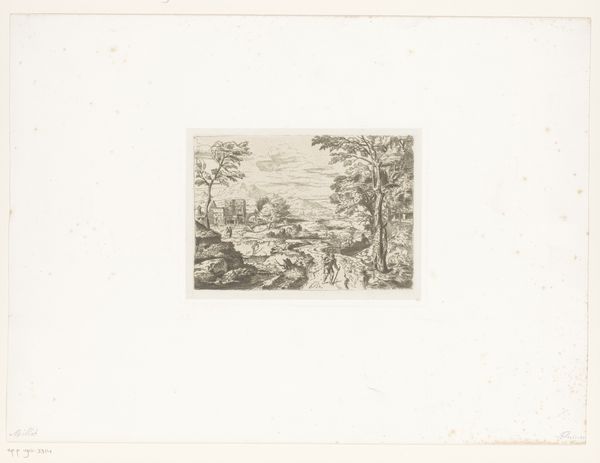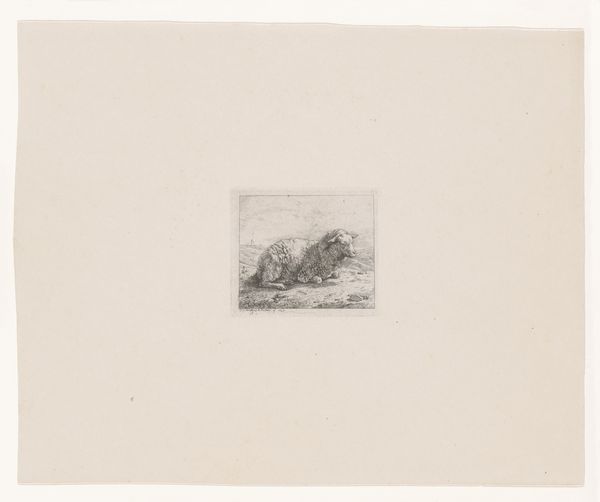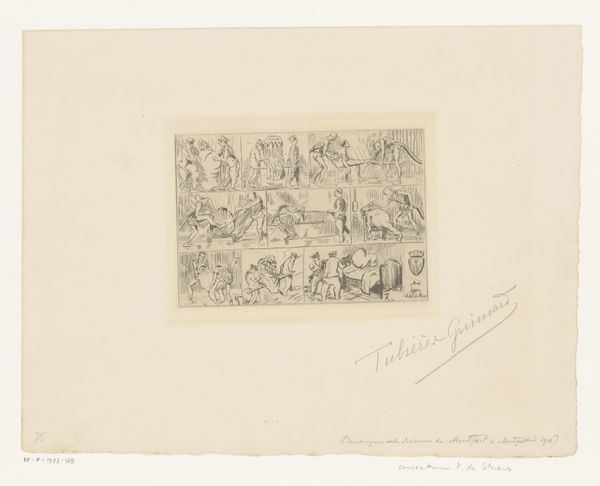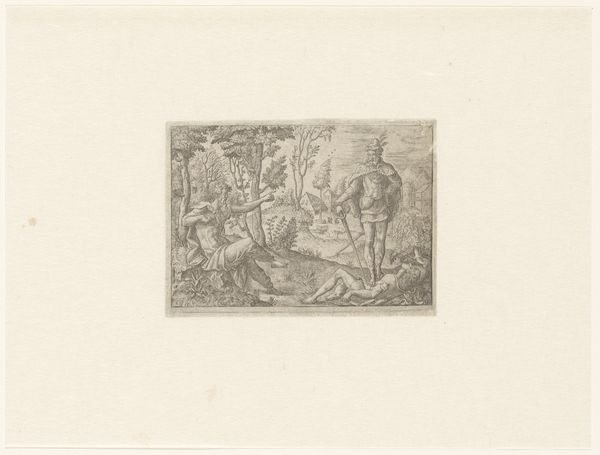
print, engraving
#
narrative-art
#
baroque
# print
#
old engraving style
#
figuration
#
line
#
genre-painting
#
engraving
Dimensions: height 98 mm, width 105 mm
Copyright: Rijks Museum: Open Domain
Curator: Andreas Scheits’ print, "Resting Man and Death," made sometime between 1665 and 1735, captures a surprisingly intimate confrontation. Editor: Gosh, what a stark little scene. I find its directness arresting, this unexpected interruption of daily life by…well, the inevitable. It's funny how scared the man is, while the dog stays calm! Curator: Engravings like these were widely circulated, acting as moral reminders or allegories. It is fascinating how prints like this could disseminate these themes. Death arrives in clothing not exactly befitting of Death. Editor: That’s it! There's something absurd about it, a touch of dark humor in how Death is almost casually dressed, as if he just popped by on his way somewhere. He doesn't need the cloak to be intimidating; he *is* intimidation personified, coming in the sunlight like this. Curator: The line work here emphasizes clarity, yes? What you say on the garb is striking because the composition directs our view to this unlikely meeting by way of the medium’s own production through its means. Editor: I see him almost shrinking away as I let my eye explore this dance between material reality and our existential dread. The dog doesn't mind, there by the man's side in support. What would make it any better if it had color, right? Curator: The absence of color indeed focuses on the formal components, highlighting line, contrast, and composition—integral aspects of the printing process, particularly engraving. Editor: The way Scheits frames this mortal coil's drama in this mundane setting and monochrome tonality hits different! There's wisdom, isn't there? Curator: Certainly, it's a powerful intersection of production values and thematic resonance.
Comments
No comments
Be the first to comment and join the conversation on the ultimate creative platform.

